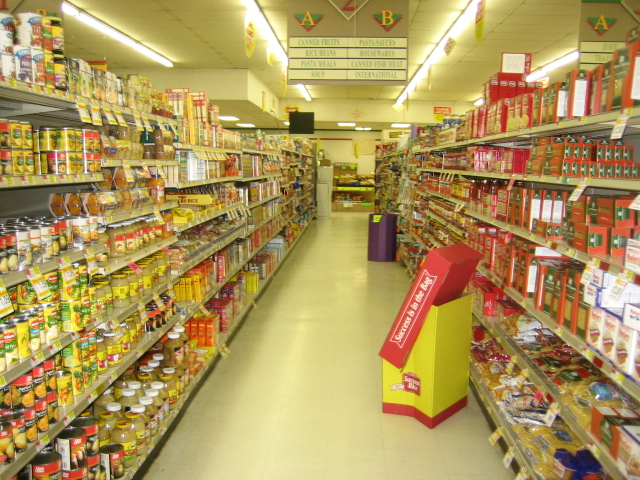Friday, 26/12/2025 | 11:56 GMT+7
As a grocery or convenience store owner/operator, you understand that energy management is a top priority in the success and sustainability of your business. Therefore it’s important to seek out new ways to reduce your daily energy usage, whether it’s by optimizing current energy use or embedding energy awareness in your company’s culture. This section will be a resource to help you build an energy efficiency program that works for your business. This appendix is organized in the following sections:
Profiling Your Energy Use
The food-sales industry shares many of the energy-related challenges seen in other business sectors, such as lighting, heating and cooling, appliances, etc., but what sets it apart is its high dependence on refrigeration. For supermarkets, grocery stores, or convenience stores, refrigeration may use up to 40 percent of the property’s total energy. That’s why it’s important to maintain refrigeration systems and to learn about the multitude of energy efficiency options available in today’s market. Better technology and improved practices can be applied to all types of refrigeration equipment, such as reach-in, walk-in, and under the counter refrigerators/freezers, as well as a multitude of food/drink storage units and display cases. The following tips are designed to help your business improve the efficiency of its refrigeration, thereby reducing operating costs, saving energy, and preventing pollution.

Refrigeration
- Purchase ENERGY STAR certified refrigerators and freezers which can save you energy and money over time. You may be able to find rebates for your purchase from ENERGY STAR Partners.
- Keep the doors of all refrigeration and freezer units shut as much as possible as repeated fluctuations in temperature will damage food quality and cost money.
- Check the temperature settings of your units. If the temperature is set lower than necessary, you are probably wasting energy. The most common recommended settings are between -14° and -8° Fahrenheit for freezers and between 35° and 38° Fahrenheit for refrigerators.
- Clean the cooling coils on the backs of all units. Over time, dirt accumulation impairs proper heat transfer and lowers the efficiency and capacity of refrigerators. As you clean dirt and dust, watch for ice accumulation on coils and remove that as well.
- Ensure that the door seals on your units close tightly. Having tight seals and properly closing doors prevents warm air from entering the unit, reducing energy required for cooling as well as preventing frost build up. Use this rule of thumb: If you can easily slide a dollar bill into the seal, have the seal adjusted.
Lighting
Lighting products that have earned the ENERGY STAR deliver exceptional features, while using less energy. ENERGY STAR certified lighting products combine quality and attractive design with the highest levels of energy efficiency available today. ENERGY STAR certified fixtures typically use one-quarter the energy of traditional lighting and distribute light more efficiently and evenly than standard fixtures. In addition to bulbs and fixtures themselves, your store can employ lighting controls and/or sensors to reduce energy use.
Heating and Cooling
Although heating and cooling systems provide a useful service by keeping customers and employees comfortable, they also can account for a significant portion of a building’s energy use. For more information, see the ENERGY STAR Guide to Energy-Efficient Heating and Cooling. Here are some tips you can employ in your retail space:
- Change your air filter regularly. Check your filter every month, especially during heavy use months (winter and summer). If the filter looks dirty after a month, change it. At a minimum, change the filter every three months. A dirty filter will slow down air flow and make the system work harder to keep you warm or cool—wasting energy.
- Tune up your HVAC equipment yearly. Just as a tune-up for your car can improve your gas mileage, a yearly tune-up of your heating and cooling system can improve efficiency and comfort. Use the ENERGY STAR Maintenance Checklist as a guide.
- Install a programmable thermostat. A programmable thermostat is ideal for areas that are unoccupied during set periods of time throughout the week. Rooms that have minimal traffic (such as stock rooms and warehouses) should be kept cooler in the winter and warmer in the summer.
- Seal your heating and cooling ducts. Ducts that move air to-and-from a forced air furnace, central air conditioner, or heat pump are often big energy wasters. Sealing and insulating ducts can improve the efficiency of your heating and cooling system by as much as 20 percent and sometimes much more. See the ENERGY STAR Duct Sealing brochure for more information.
Anh Tuan








 Webinar 2: “Financial Support for Energy Efficiency Enterprises – Opportunities and Challenges”
Webinar 2: “Financial Support for Energy Efficiency Enterprises – Opportunities and Challenges”
 Vietnamese enterprises achieve green growth and cut costs through energy efficiency
Vietnamese enterprises achieve green growth and cut costs through energy efficiency
 Capacity Building for Program Implementing Entity
Capacity Building for Program Implementing Entity
 Enhance Energy Efficiency Knowledge for Managers of Cement Industrial Enterprises
Enhance Energy Efficiency Knowledge for Managers of Cement Industrial Enterprises
 Capacity building for participating financial institutions of the VSUEE Project
Capacity building for participating financial institutions of the VSUEE Project
 Capacity building for participating financial institutions in Ho Chi Minh City
Capacity building for participating financial institutions in Ho Chi Minh City
 Strengthening capacity for energy management officers of local government agencies
Strengthening capacity for energy management officers of local government agencies